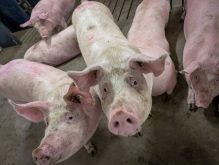CALGARY – Alberta’s horticulture industry may be one of the province’s best kept secrets.
It generates more than $162.6 million in sales annually, yet only takes 0.23 percent of the crop production land available in the province.
Such findings were good news for Henry Heuver who sees plenty of potential in the industries he represents. He is president of the Council of Alberta Horticultural Industries, an umbrella group of 10 related organizations that includes vegetables, greenhouse products, plant nurseries, fruit production and tree farms.
The council recently completed a study to measure the industry’s economic value. The study said 890 producers in Alberta generate more than 3,000 direct jobs and another 5,700 spinoff positions.
Read Also

More work wanted on removing red tape
REGINA — Canadian farmers risk falling further behind competitors if two main federal agencies don’t become more efficient and responsive…
To help the industry succeed, trained help is necessary. Setting up training for growers and staff to operate specialized equipment and handle delicate products will be one of the tasks of a human resources committee.
Prepare to work hard
“There’s room for new people but it’s hard work and it’s much more labor intensive (than traditional crops). People have to be prepared to accept that,” Heuver said.
But the returns are good.
For example, the study of the last crop year showed an acre of strawberries on irrigated land had gross sales of $4,950. Conversely, an acre of hard red spring wheat on irrigated land had gross sales of $225.
More from less
“We might not have the acreage but we do have the value and our crops produce a very high value,” said Heuver. He is the owner of Foothills Nursery at Calgary.
Expansion is welcomed in all areas of fruit, vegetable, trees and flower production in a province that has the climate and water to grow everything from azaleas to zucchini.
“We are still bringing in a tremendous amount of horticulture products into the province. If you look at the stores, you see a lot of different types of vegetables that were brought in in very high volumes,” he said.
The council is also hoping to expand crop insurance coverage for some fresh vegetable crops. So far the number of insurable crops have increased from five to 11.

















